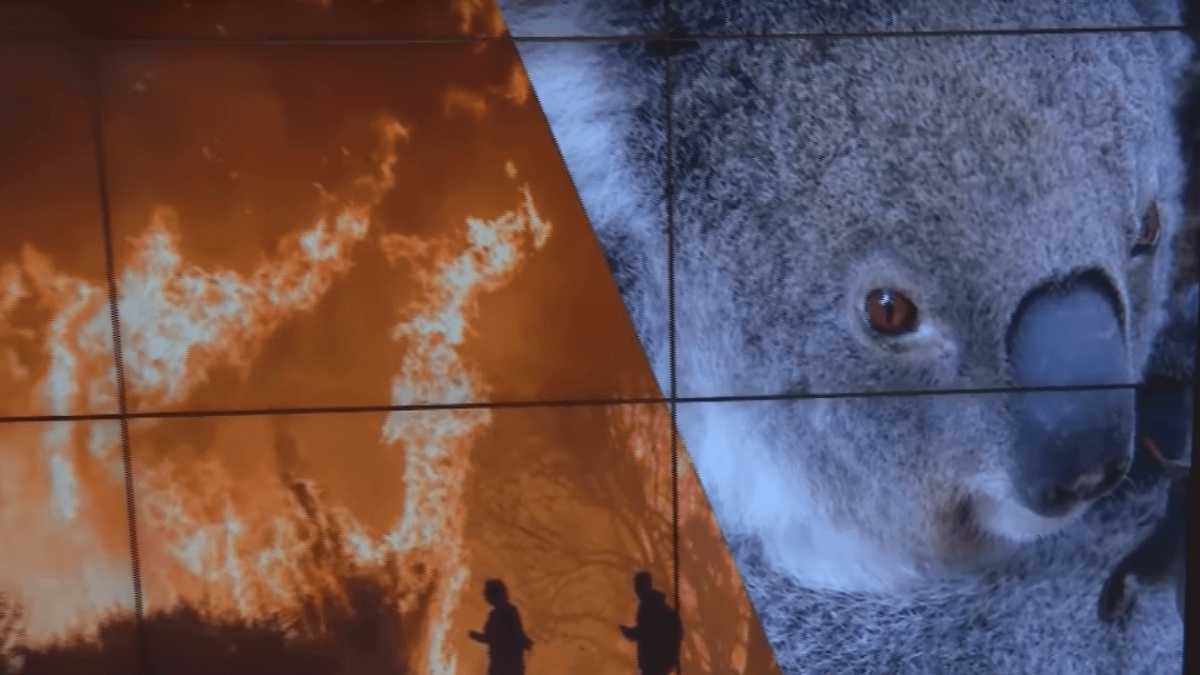On the 11th of November, fire started in Ravensbourne near Toowoomba, which burnt over 20,000 hectares (49,000 acres) of bush across several days, destroying 6 houses and since then the wildfires in Australia has reached a point where not only it has destroyed the flora and fauna on the country but also did a loss of property, so much so that thousands of residents were forced to evacuate.
This week the bushfires reached suburban parts of Sydney, people living in the city saw skies turning blood-red and smoke all over. Coastline towns in New South Wales and Victoria have been demolished by the fires, leaving thousands of people homeless. The worst of all is that there are many people stuck behind the fire lines, with no power, cell services, and depleted resources.
According to the New South Wales Rural Fire Service, since 1st of July almost 5 million hectare (50,000 Kilometre square) of land has been burned down by the wildfires, to give it some perspective, in 2019 Amazon fires burned down 900,000 hectare (9,000 Kilometre square) of land, and in 2018 California fires burned 800,000 hectare (8,000 kilometre square).
Also, the flames in some areas have reached a height of 70 metres, again, to give it perspective, the famous Sydney Opera House is only 65 metres tall. The smoke of the Australia wildfire has now reached New Zealand which is over 1600 kilometres away, and the smoke in Australia caused by these bushfires is visible from the space. In December alone, Australia saw temperatures so high that it broke all-time records, and this did not happen once, but twice, first it reached 40.9 °C and then 41.9 °C. By the end of December, each and every state of the country had seen 40 °C.
The death toll from these fires rose to 24 and military’s help is being taken to evacuate residents and even the wildlife from these fires. Huge number of wildlife has lost their lives owing to the wildfires.
An unprecedented step was taken by the Australian government when they called in 3000 Military soldiers to tackle the wildfires and speedup the evacuation process. More Firefighting aircrafts, and Navy’s largest ship, HMAS Adelaide, has also been deployed to help evacuate the residents and bring them to a safe place. This has been the biggest military deployment made by the country since the World War II.
Scott Morrison, Australian Prime Minister, said “this length of (fire) season is unprecedented, the ferocity and the absence of dousing rains that would normally bring a season like this under control is nowhere in sight” in a press conference on Saturday.
Morrison face major criticism for not handling the disaster in a better way as the centre did not intervene up until this weekend as bush fires are handled by State Government. Also, when the country was burning, Morrison was vacationing in Hawaii in December.
Penrith, Sydney was the hottest part in all of Australia in the afternoon of Saturday when the mercury rose to 48.9°C. “I’ve never seen anything like it in my life” Mark Fennick, a resident of Penrith said.
This isn’t the first time the Australia has been bought to its knees by bush-fires, however a two year drought along with the record high temperatures have taken the scenario to the worst. It is said that the wildfires will still continue for weeks at least.
Rural Fire Commissioner, New South Wales, Shane Fitzsimmons, said “one of our worst days on record”, on Saturday, during a press conference. Combination of low humidity and scorching heat has only made the situations worse aiding to the wildfires to spread.
However, on Sunday, improved weather conditions and some rain controlled the fires a little, helping the firefighters in NSW (New South Wales) in controlling the wildfires at several places.
On Monday, at 6:00 am, almost 140 fires were burning across the state of NSW, however, 69 of those fires could not be contained.
The ecological toll of the wildfires this year is not fully known yet, however, it is said to be disastrous. According to the University of Sydney’s Professor, Chris Dickman, around 480 million (48 crore) birds, mammals, and reptiles have been affected in the state of NSW since the start of the fires in Australia this season.
The governments of France, Canada, and even the United States have offered aid and personnel support to Australia.


